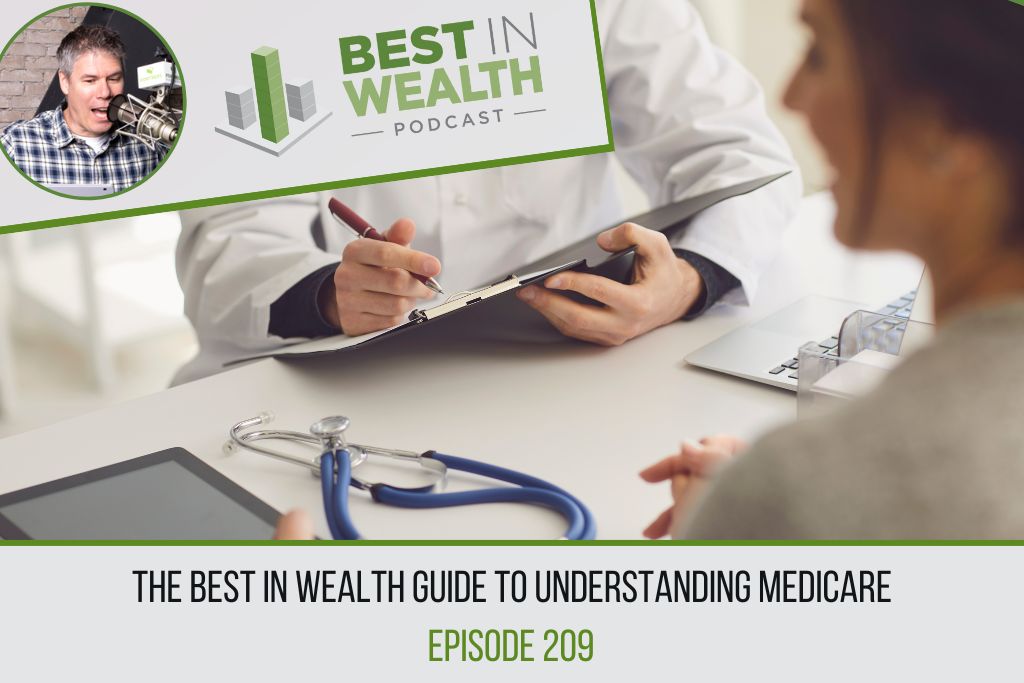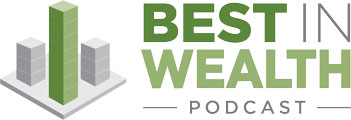The Best in Wealth Guide to Understanding Medicare, Ep #209

It is time for open enrollment for every insurance option—including Medicare. Are you confused? You are not alone. If you are not 65 and do not qualify for Medicare yet—do not tune out. This episode is for you, too. Everyone nearing retirement age needs to understand the process and the costs. So in this episode of Best in Wealth, it is my goal to help you understand the basics of Medicare.
In this episode, I share a simple guide to understanding Medicare. This is something everyone nearing retirement age NEEDS to understand. Don’t miss it! #wealth #retirement #investing #PersonalFinance #FinancialPlanning #RetirementPlanning… Click To TweetOutline of This Episode
- [4:47] Step #1: What is Medicare?
- [7:31] Step #2: What does Medicare cost?
- [10:54] Step #3: What does Medicare cover?
- [14:34] Step #4: Understanding supplemental coverage
- [23:29] Medicare planning is for everyone
What is Medicare?
Medicare is split into three parts: A, B, and D. Part A is hospital coverage, which pays for room and board if you are hospitalized or in a skilled nursing facility (not to be confused with assisted living or nursing home). Part B is “outpatient coverage,” which includes pretty much everything else: Doctor visits, equipment, lab work, surgeries, diagnostics tests, and more. Part D is prescription coverage.
You are eligible for Medicare on the first day of the month during which you turn 65 (or earlier if you qualify due to a disability). You should enroll in Medicare three months before you turn 65. However, if you are still working and covered under your employer, you can apply for a waiver to wait to enroll until you are fully retired. But if you are already 65, you might be penalized if you do not enroll immediately.
What does Medicare cost?
Part A is free. Yes, you read that right—free! It has no premium attached. In 2023, Part B will cost $164.90 per month (for most people). If you are a high-income earner, you will likely have to pay more ($238, $340, $544, or $578 depending on how much you make).
Part B premiums come directly out of your social security check monthly, unless you are delaying social security (then you will get billed quarterly). Part D drug coverage has many different options. But the national average is around $34 a month in 2022. These premiums also vary based on where you live and how much you make.
What does Medicare cost? Learn more about the basics of Medicare in this episode of Best in Wealth! #wealth #retirement #investing #PersonalFinance #FinancialPlanning #RetirementPlanning #WealthManagemen Click To TweetWhat does Medicare cover?
Medicare covers most of your healthcare costs. However, you’ll still be responsible for your deductibles, co-insurance, and copays. Part A will pay for 60 days in the hospital. Your share of the cost is a deductible of $1,556 in 2022. After 60 days in the hospital, you have to pay a larger share in the form of a copay—which could be hundreds of dollars per day. This could cost you a lot of money.
Part B covers 80% of outpatient care after a small deductible of $233 per year. You will always have to cover 20% of services with no cap. Part D helps cover prescription medications—but not everything. It is around $35 a month and some things are excluded.
Understanding supplemental coverage
Some sort of supplement is necessary for every individual. Medicare covers approximately 80% of your healthcare. But what if you end up with cancer? What if your medical treatments cost $100,000? 20% of that is still $20,000. There are two main types of supplemental coverage: a Medigap plan or a Medicare Advantage Plan.
A Medigap plan or Medicare supplement covers things that would normally be your share—such as the 20% Medicare does not cover. Some plans also cover Part A and Part B deductibles. These plans cost more but allow freedom of choice in medical care. You can see anyone who accepts Medicare. The additional monthly cost is approximately $150.
A Medicare Advantage Plan (or part C coverage) is the other option, instead of a supplement. These plans were created as a low-cost alternative and pay instead of Medicare. They are private insurance plans with their own local network of providers (HMO or PPO style). You see a set provider, group, or network to keep costs low. You pay copays for services as you obtain them. This option is typically lower cost than Medigap plans.
I know this can get complicated. That is why it is important to work with a financial advisor who knows a lot about Medicare so they can help guide you through the process. You need someone on your side who you can trust. Listen to the whole episode for more details about Medicare coverage!
I help you understand Medicare and supplemental coverage in this episode of Best in Wealth. Check it out! #wealth #retirement #investing #PersonalFinance #FinancialPlanning #RetirementPlanning #WealthManagemen Click To TweetResources Mentioned
Connect With Scott Wellens
- Schedule a discovery call with Scott
- Send a message to Scott
- Visit Fortress Planning Group
- Connect with Scott on LinkedIn
- Follow Scott on Twitter
- Fortress Planning Group on Facebook
Audio Production and Show notes by
PODCAST FAST TRACK
https://www.podcastfasttrack.com
Podcast Disclaimer:
The Best In Wealth Podcast is hosted by Scott Wellens. Scott Wellens is the principal at Fortress Planning Group. Fortress Planning Group is a registered investment advisory firm regulated by the Securities Act of Wisconsin in accordance and compliance with securities laws and regulations. Fortress Planning Group does not render or offer to render personalized investment or tax advice through the Best In Wealth Podcast. The information provided is for informational purposes only and does not constitute financial, tax, investment or legal advice.



